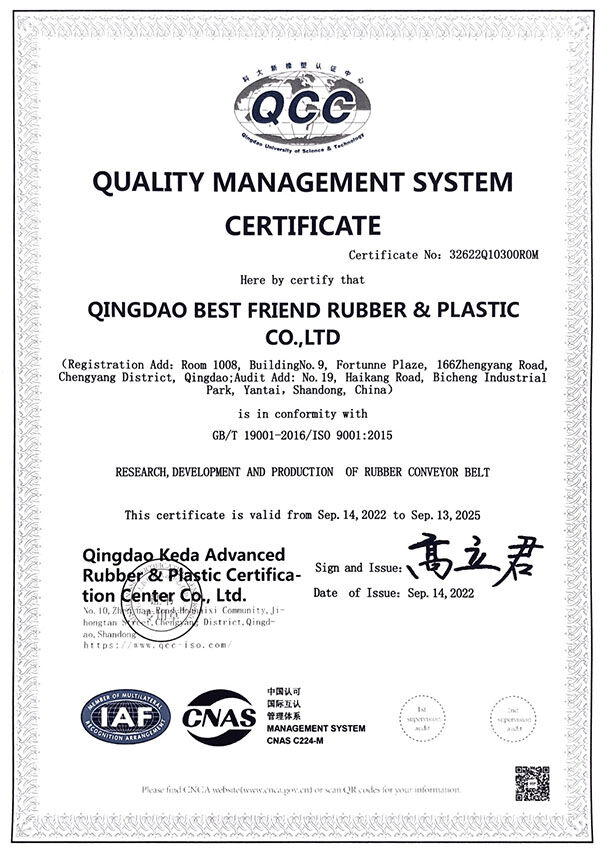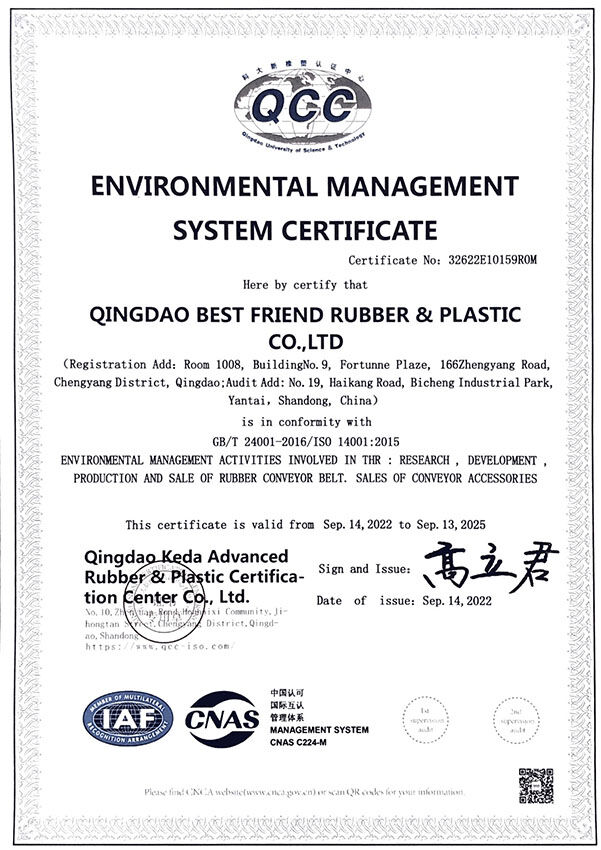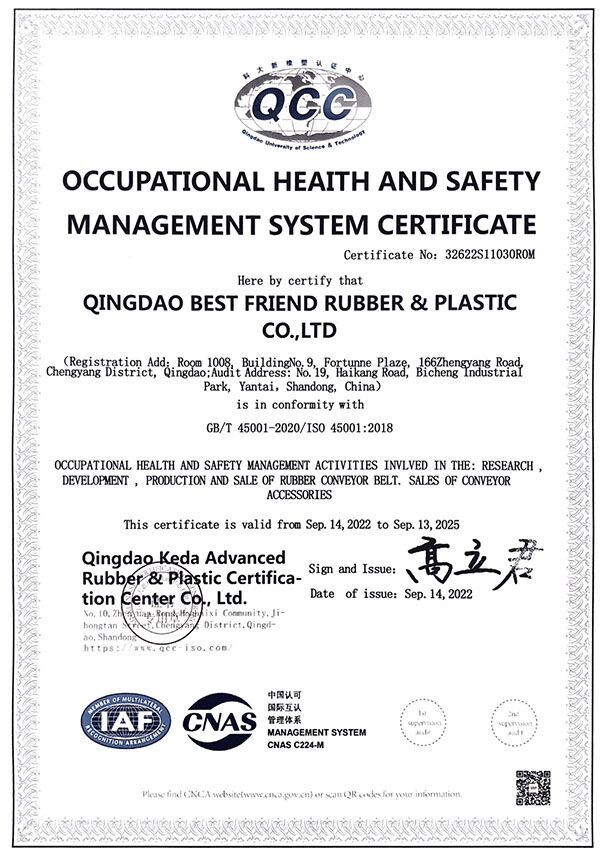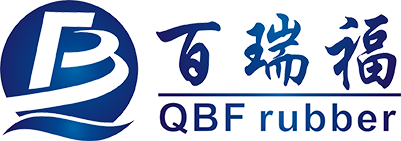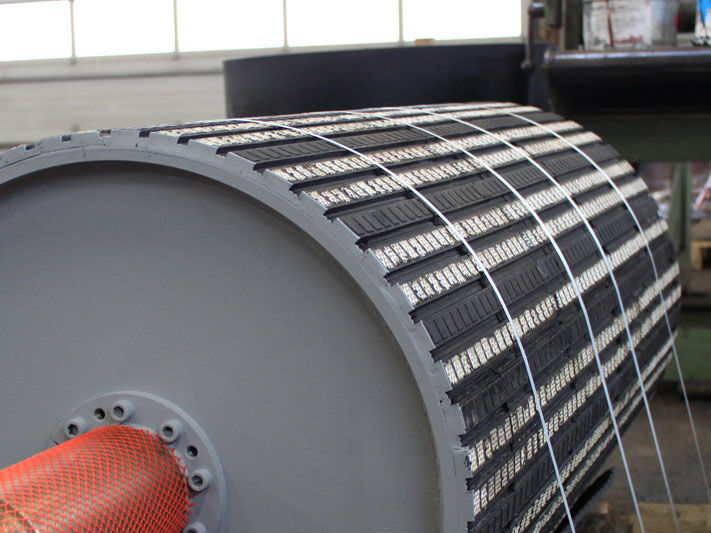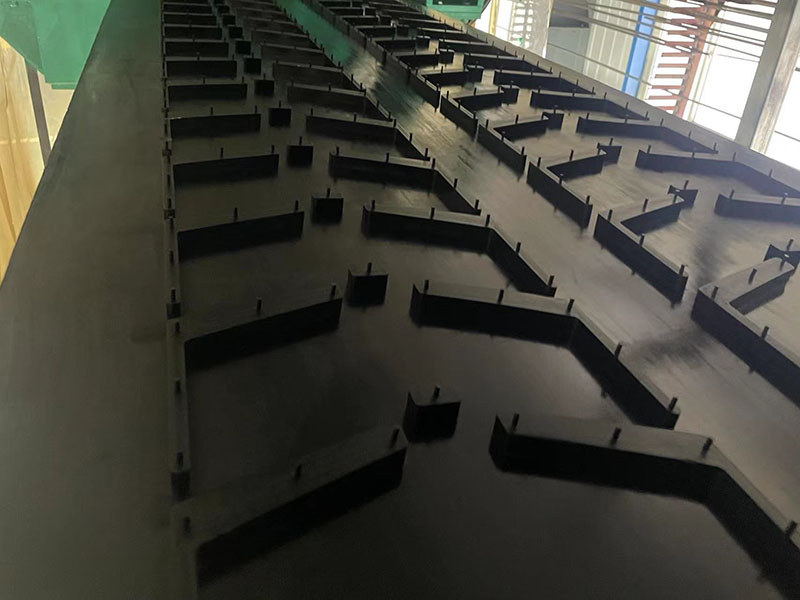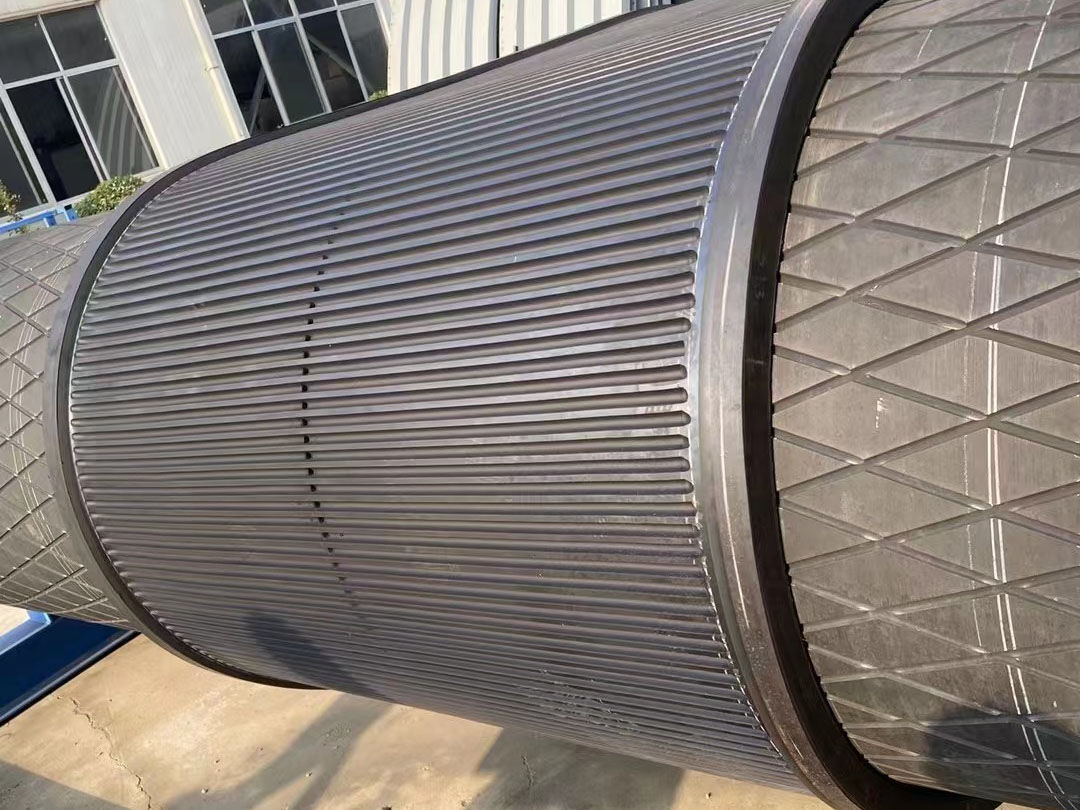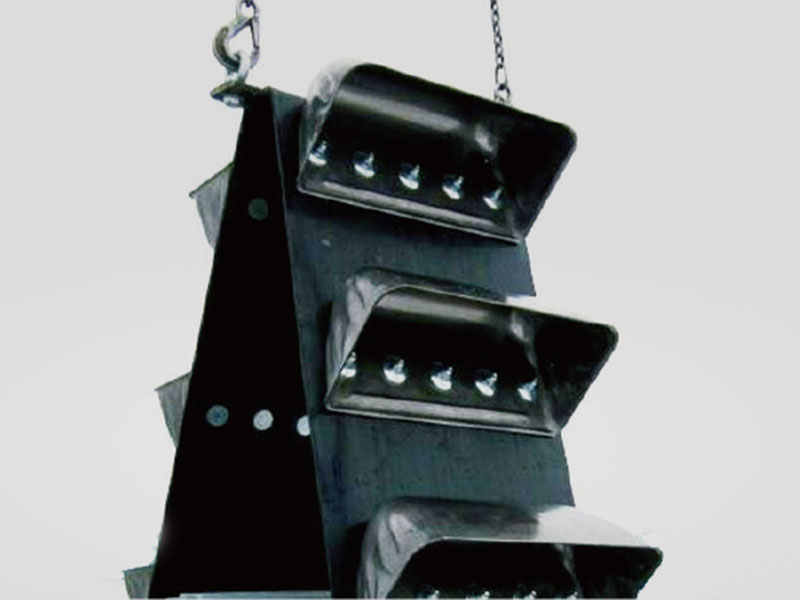For efficient and economical conveyor operation, proper pulley lagging is essential.
Pulley lagging
Pulley lagging increases the traction between the belt and the pulley, which in turn reduces load and wear on the drive, belt, pulleys, bearings and take-up.
For efficient and economical conveyor operation, proper pulley lagging is essential.
Ceramic pulley lagging
Ceramic pulley lagging provides the solution when conventional rubber lagging fails to correct a belt slippage problem and/or when rubber lagging wears prematurely.
QBF ceramic pulley lagging with high wear resistant ceramic modules display, compared to viscoelastic materials (elastomers), is of outstanding and proven wear behavior.
They are marked by significantly increased abrasion resistance while providing the highest friction forces to the friction partner.
The design as ceramic friction module with a flexible elastomeric substructure is, in terms of pulley laggings, an ideal combination of materials that synergistically combines
the benefits of its individual components.
Features
● Elastic rubber base to reduce belt wear
● Superior drive traction allows lower belt tension
● High wear-resistant
● Special design on the pulley surface with very good self-cleaning effect
● Easy bonding with germanBond 2KR in high adhesion value (≥12N/mm), reduce downtime, improve maintenance efficiency and reduce safety risks
Rubber lagging
Rubber lagging is applied to pulley in order to improve the friction between the pulley and the belt.
Conveyor drive pulleys are often supplied with diamond grooved lagging as indicated in the adjacent sketch.
Diamond grooved lagging' refers to the pattern in the lagging and this pattern, like with vehicle tires, and enhances the grip or friction even if the belt surface is dirty.
A number of variations to diamond-grooved lagging are available including for example, chevron-lagging.
QBF rubber laggings for conveyor belt pulleys provide optimal force transmission at a high lifespan. Even in wet and muddy conditions, the friction material for pulley laggings ensures
optimal grip. Relying on our rubber lagging materials, the slip and wear on belt and pulleys can be reduced. Protect the components of your conveyor belt system with QBF pulley laggings.
● Increasing of the friction value between conveyor belt and pulley
● Minimizing of the belt slip and improvement of self-cleaning
● Protection of the pulley to prevent wearing off and corrosion
● Easy bonding with germanBond 2KR in high adhesion value (≥12N/mm), reduce downtime, improve maintenance efficiency and reduce safety risks
● Various performance: flame retardant, anti-static, oil resistance, heat resistance and other grades as required.
Related Suggestion
Online Consultation
Product
We reply online 24 hours.
Address
Factory Address: No.19 Haikang Road, Greencity Industrial Park, Haiyang City, Shandong Province, China
Get in Touch with Us
By clicking 'Allow All', you agree to the storage of cookies on your device to enhance site navigation, analyze site usage and assist with our marketing efforts.
